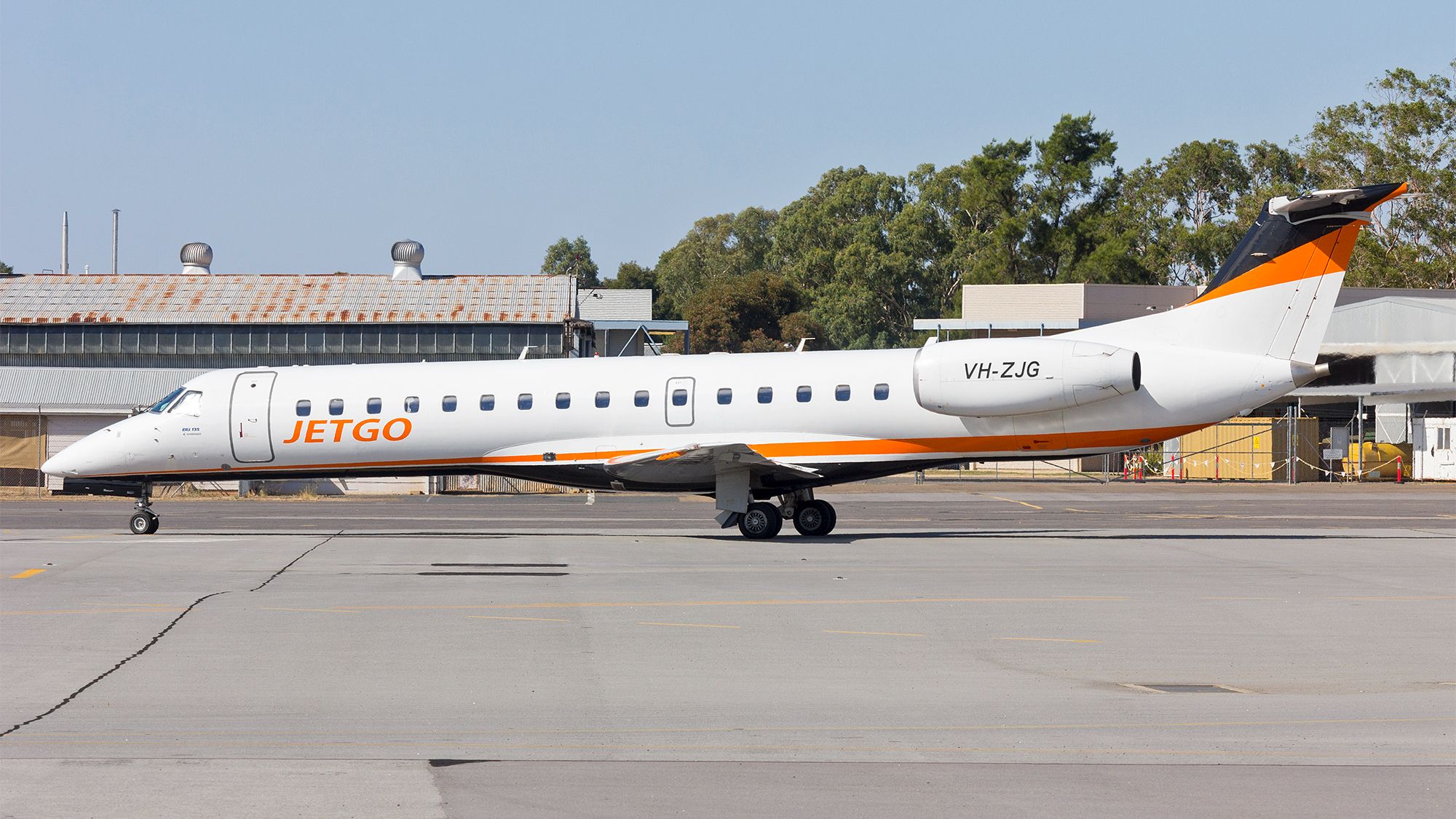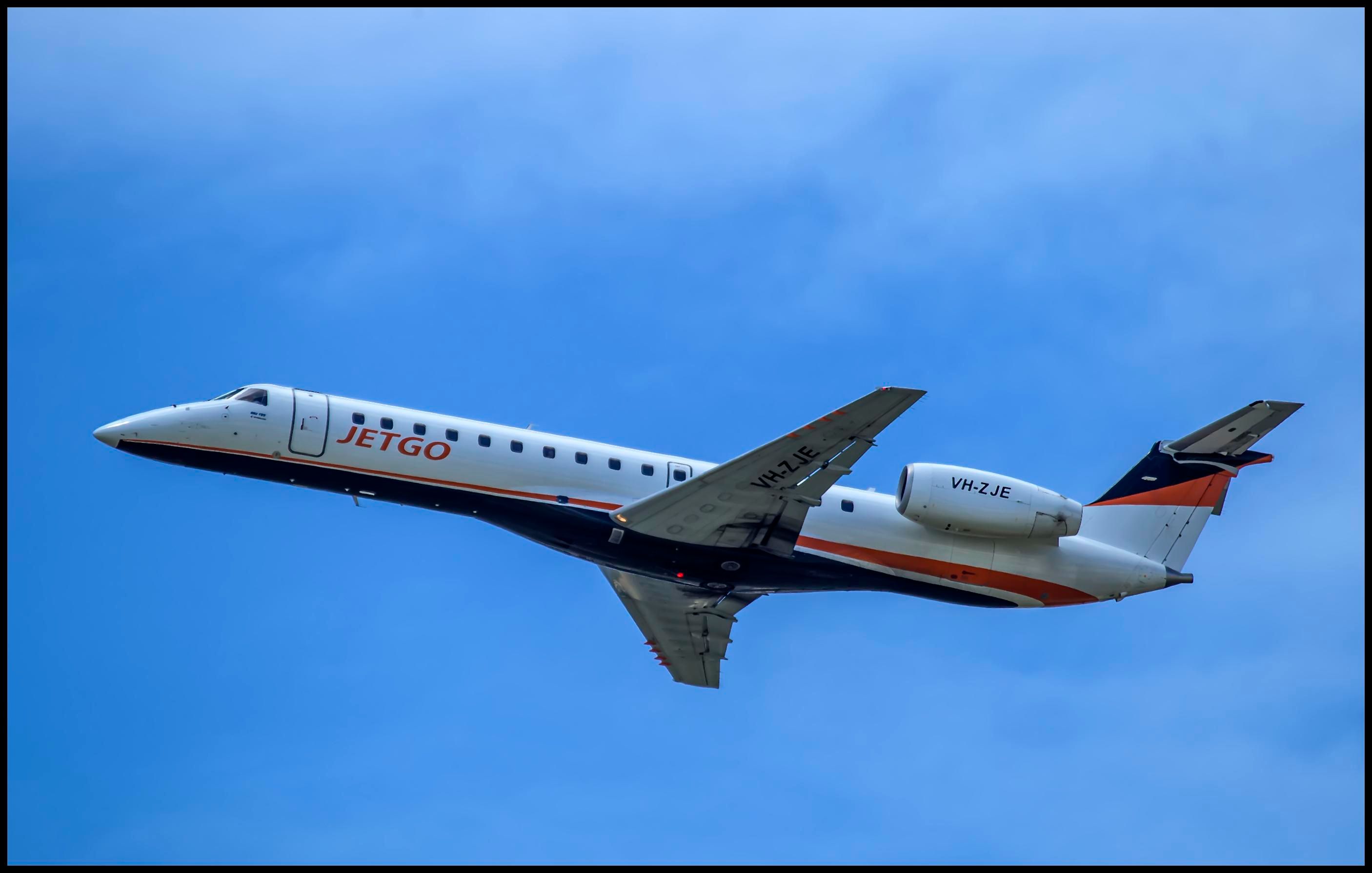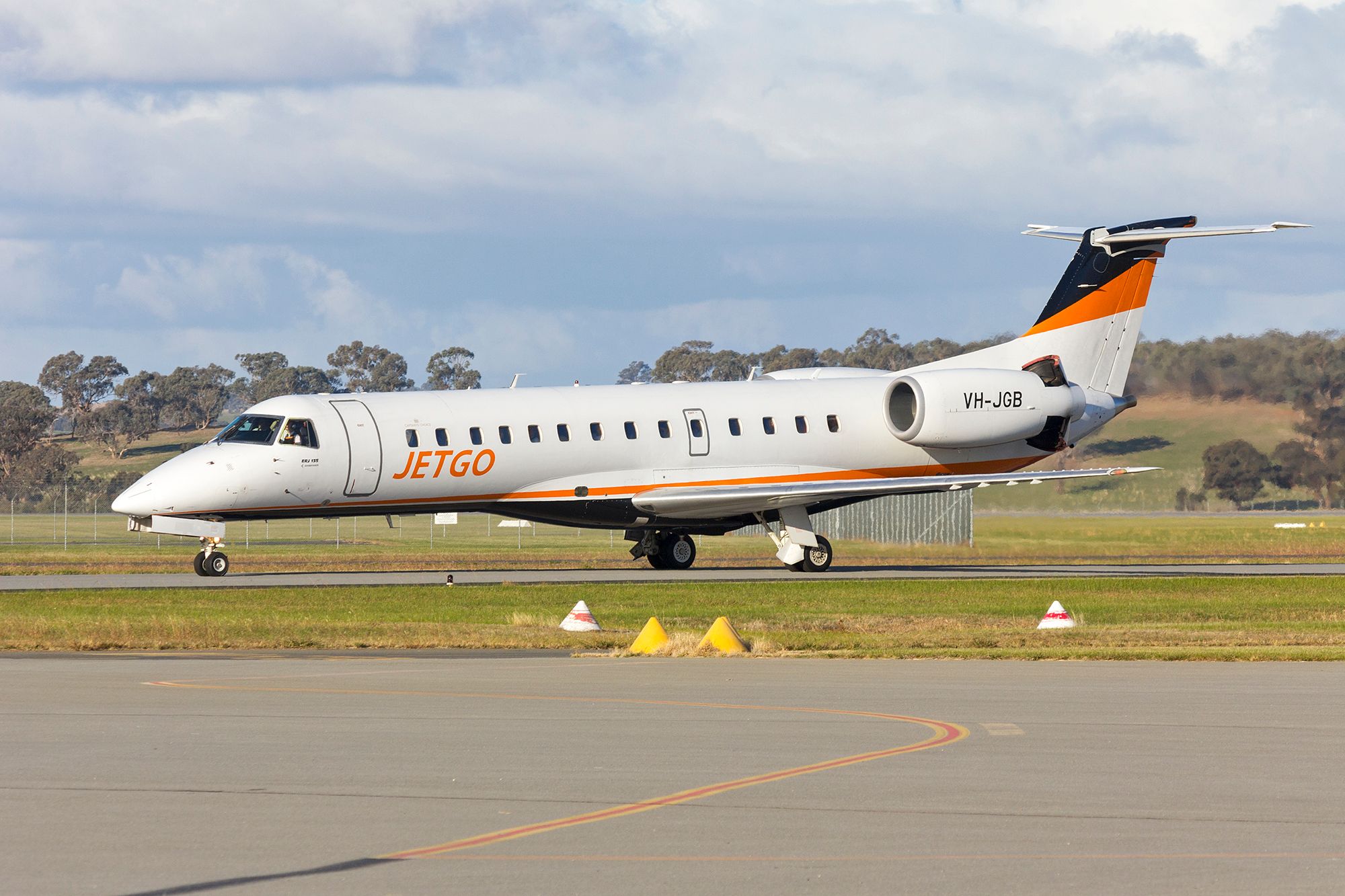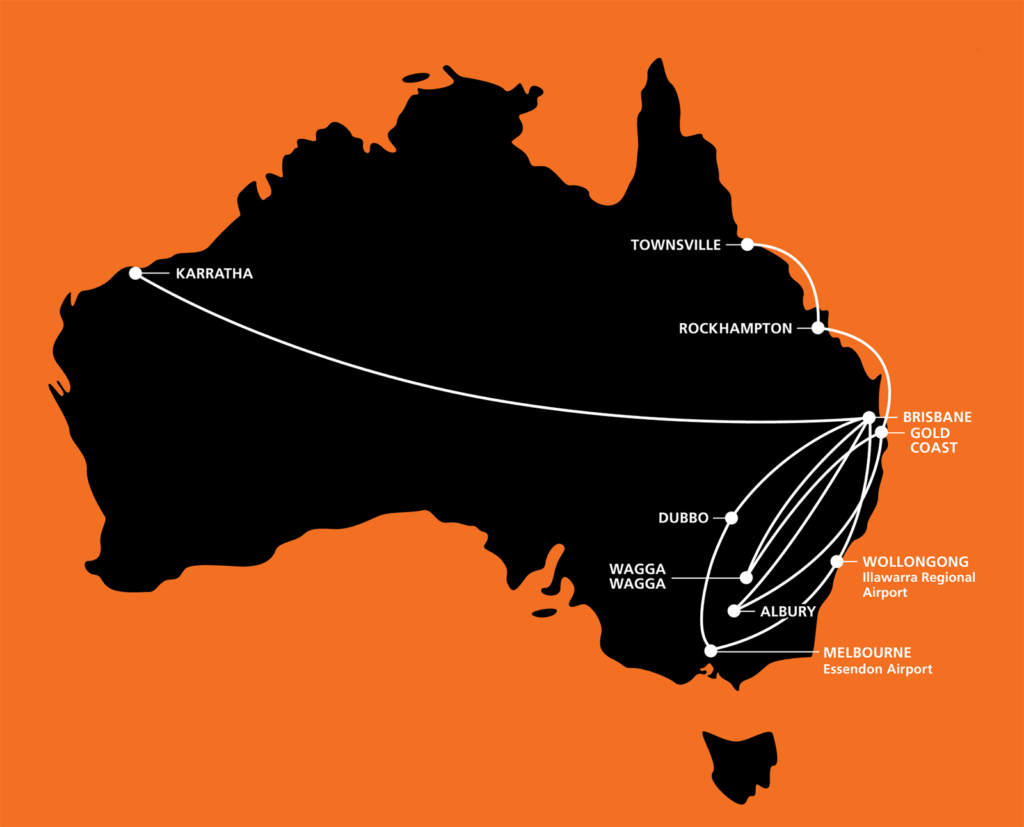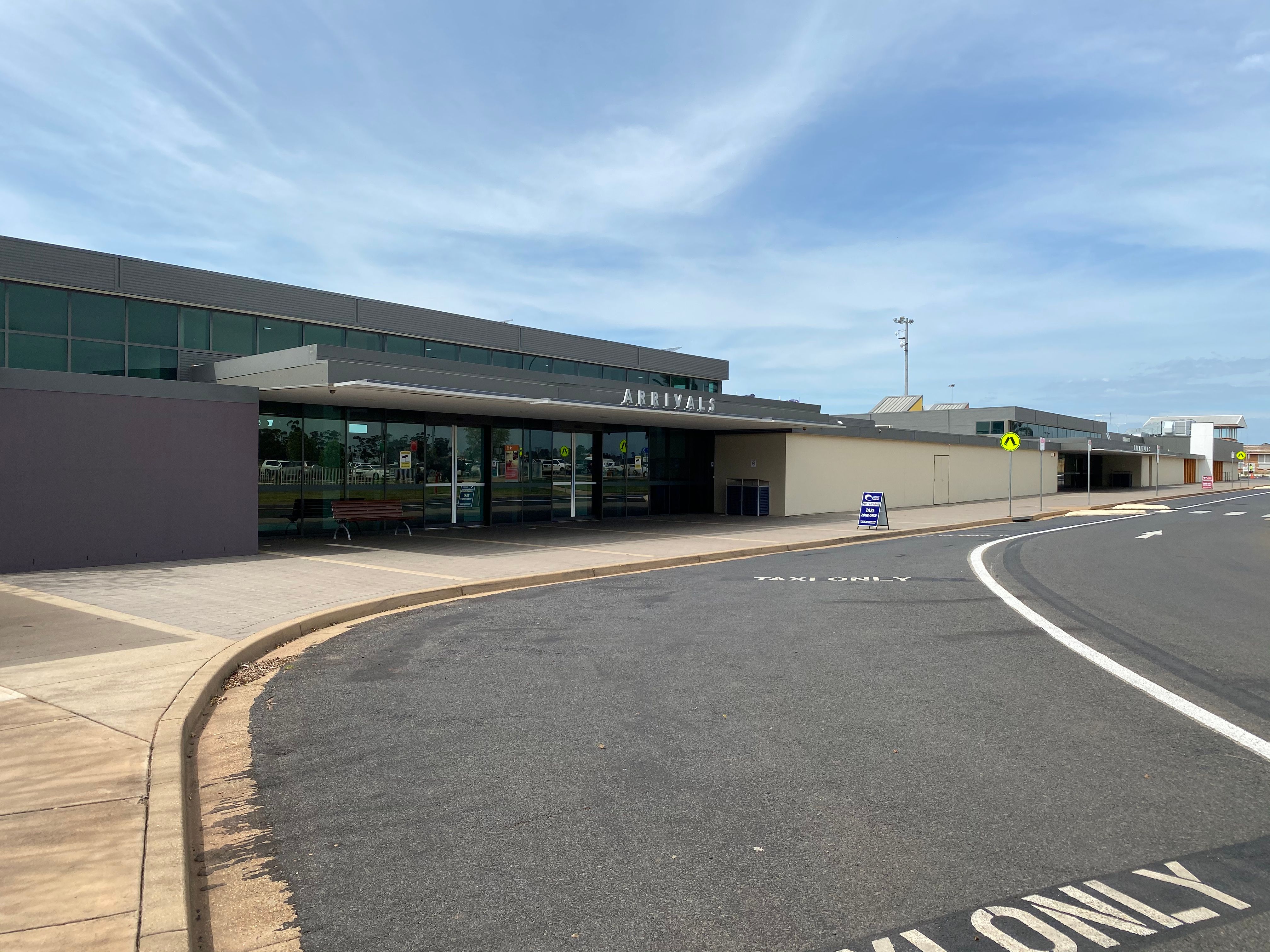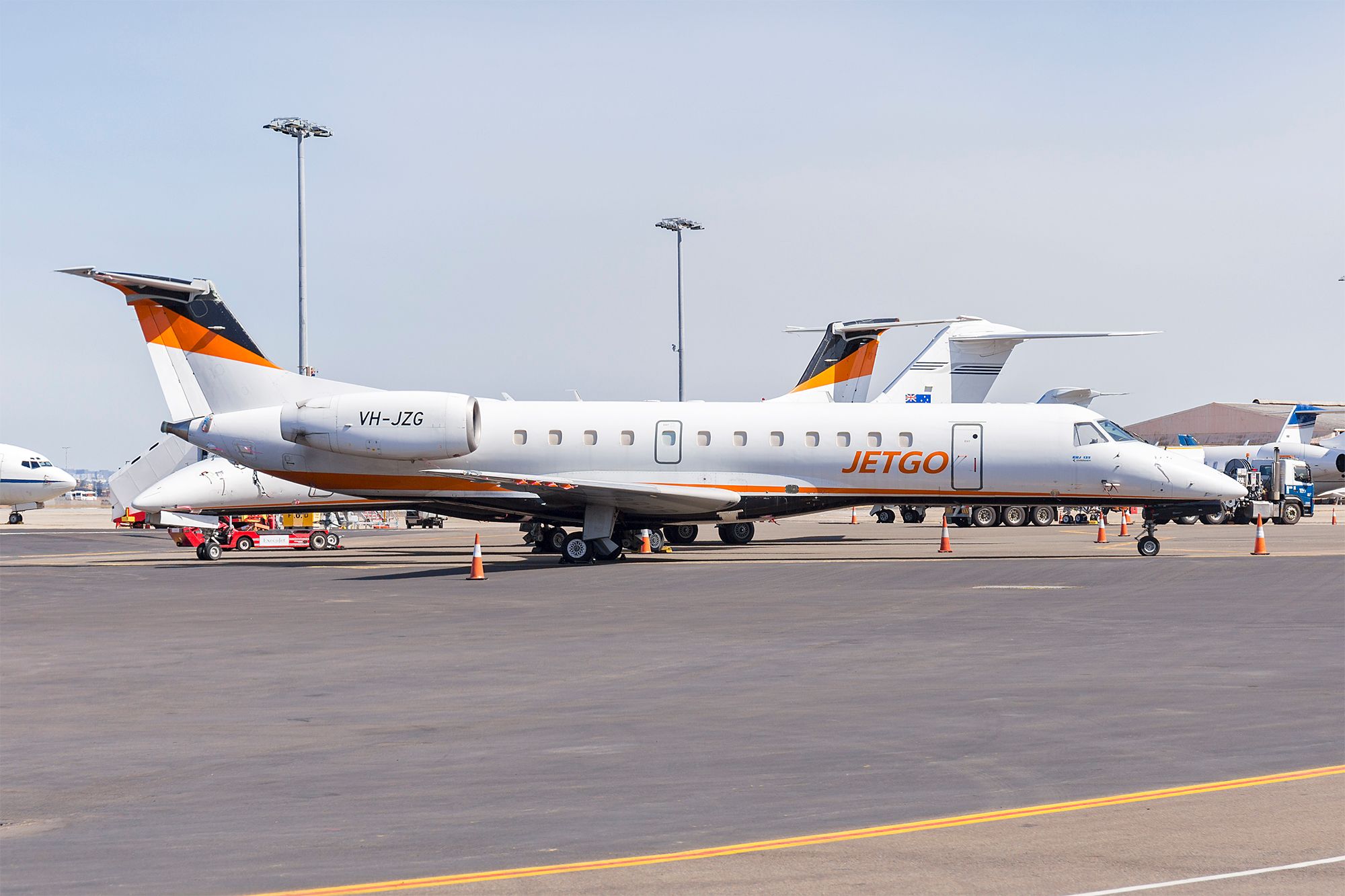Summary
- JetGo, a regional airline in Australia, collapsed in 2018 after just six years of operation despite innovative regional routes and a focus on fly-in-fly-out mining markets.
- The airline faced challenges such as a lack of demand on certain routes and requirements to cancel others.
- JetGo encountered severe maintenance limitations, accumulated major debts, and faced legal action from the Dubbo Regional Council over unpaid fees.
Getting regional jets to work on skinny regional routes in Australia is a tough business, and the rise and fall of JetGo is an example. Despite an innovative network covering mostly unserved routes across Australia's eastern seaboard, JetGo collapsed in inglorious circumstances in 2018 after flying for just six years.
Brisbane-based JetGo started out focused on fly-in-fly-out flying
Based at Brisbane Airport, JetGo began running charter and fly-in-fly-out (FIFO) flights when it gained its air operators certificate (AOC) in 2012. JetGo's first regional jet, an Embraer ERJ 135 that came via Chautauqua Airlines and FlyMex, landed in Brisbane in March that year. At the time, JetGo planned to focus on the revenue-rich FIFO mining markets.
Behind the airline were a couple of private companies, including Redlum Pty Ltd and Shef's Supermarket Australia Pty Ltd. Dig a little deeper, and there were links into the Australian aviation scene.
Australia's airline industry is littered with airlines that started small with a focused strategy. But the smell of Avgas is enough to get anyone into an expansionary frame of mind. By March 2013, JetGo had three Embraers and was eyeing regular passenger services to regional centers in Queensland that would operate in conjunction with its mining charter services.
Australia's Civil Aviation and Safety Authority (CASA) gave JetGo the green light to begin scheduled passenger services in 2014. Straight away, the airline announced a few new routes - Sydney (SYD) - Tamworth (TMW), Sydney - Gladstone (GLT), and Sydney - Roma (TMA).
Interesting passenger route ideas
Sydney to Tamworth was already a Qantas stronghold, and Virgin Australia would start flying the route the following year. However, the Gladstone route was interesting - Gladstone is one of the world's largest coal exporting ports, and a direct flight could have potentially worked well for coal corporations and FIFO workers looking to bypass a Brisbane connection.
On the other hand, the Roma route was more oddball than exciting and never got off the ground. It was axed just weeks before the first flights due to lack of demand. The Gladstone flights were then axed in February 2015 for the same reason. Demand was highly variable, and a JetGo executive at the time said locked-in travel contracts with Qantas didn't help.
But Tamworth proved a better bet. While JetGo ultimately dropped the regional New South Wales city from their network, flights there laid out the passenger route template for the airline - linking regional cities in one state with the capital city of another state. It's something airlines like East-West did a generation ago with their Fokker Sydney - Devonport - Hobart, Brisbane - Tamworth - Sydney, and Melbourne - Albury - Sydney flights.
Discover more aviation news with Simple Flying.
In JetGo's case, the New South Wales regional city of Dubbo (DBO) was linked to both Melbourne (MEL) and Brisbane by jet. Wagga Wagga (WGA) would connect to Brisbane and the Gold Coast (OOL). JetGo's Embraer aircraft would also link Albury (ABX) with the two Queensland cities. Wollongong (WOL), New South Wales' third largest city, would also briefly see JetGo flights to Brisbane and Melbourne.
But ultimately, an interesting route structure of skinny regional routes operated by Embraer jets did not succeed. Not even the lure of skipping a Sydney connection could make the flights work.
Legal action from local council
From its first scheduled passenger flights, armchair airline CEOs questioned JetGo's strategy. The airline encountered several problems during its brief years in operation. This included severe maintenance limitations, with aircraft often sidelined for months due to a lack of maintenance capability.
After a three-year pause, three more Embraers were delivered across 2016 and 2017 - two ERJ 135s and an ERJ 145. The airline built up its network in the four years it flew, dropping some destinations (like Tamworth) in favor of new destinations like Wollongong and Wagga Wagga. The route churn was getting attention.
However, the airline was racking up significant debts and went into voluntary administration in mid-2018, canceling all of its passenger services. One of the tipping points appears to be legal action launched earlier that year by Dubbo Regional Council, operators of Dubbo Airport.
Said legal action was related to allegations of unpaid passenger charges, landing fees, and parking fees at DBO. Dubbo Regional Council has a reputation for being a tough airport operator - Australia's Rex has a long-running stoush with the council over the cost of flying into the airport. But Dubbo is a major service city in central west New South Wales with plenty of corporate traffic. The revenue opportunities for airlines like JetGo and Rex outweigh the hassle of dealing with the airport operator.
Collapse leaves thousands out of pocket
As administrators began to sift through JetGo's accounts, there were allegations the airline may have been trading while insolvent for almost two years before it filed for administration. Administrators said creditors were owed approximately $32 million but were unlikely to get any money back and queried the accuracy of JetGo's financial records.
Around 10,000 passengers with useless tickets were out of pocket. Also going unpaid were JetGo employees (who were owed $1.84 million), suppliers, and airport operators. Dubbo Regional Council was owed around $200,000, and the council owners of Wollongong Airport were owed around $297,000.
It also emerged that JetGo's CEO, Jason Ryder, had previously operated four failed aviation and tourism businesses. According to the Daily Liberal newspaper, JetGo's directors could have breached Australia's Corporations law, including "a breach of their obligation to keep financial reports, breach of directors duties and the failure to prevent insolvent trading."
In the weeks running up to June 2018, JetGo was canceling flights owing to a lack of cash to operate them. The airline was also down to flying two Embraers after lessors repossessed two planes, and the remaining aircraft had no real value.
The JetGo fleet today
According to ATDB.aero, two of JetGo's former fleet are still active today - one ERJ-135 and one ERJ-145. The former is now registered as N311RF and flies under RVR Aviation Charter, while Australian Corporate Jet Centres operate VH-JGR (same registration as under JetGo).
Airlines running out of money isn't a new phenomenon, and it sure isn't restricted to Australia. However, Australia is a bit of a Bermuda triangle for airlines in expansion mode. JetGo made quite the splash with their Embraers and interesting routes. On the surface, at least, it was a fascinating business idea. But as JetGo learned in 2018 and airlines are still discovering today, it takes deep pockets to keep flying in Australia.
Did you ever fly with JetGo? Let us know your stories in the comments.
Source: Daily Liberal, ATDB.aero

